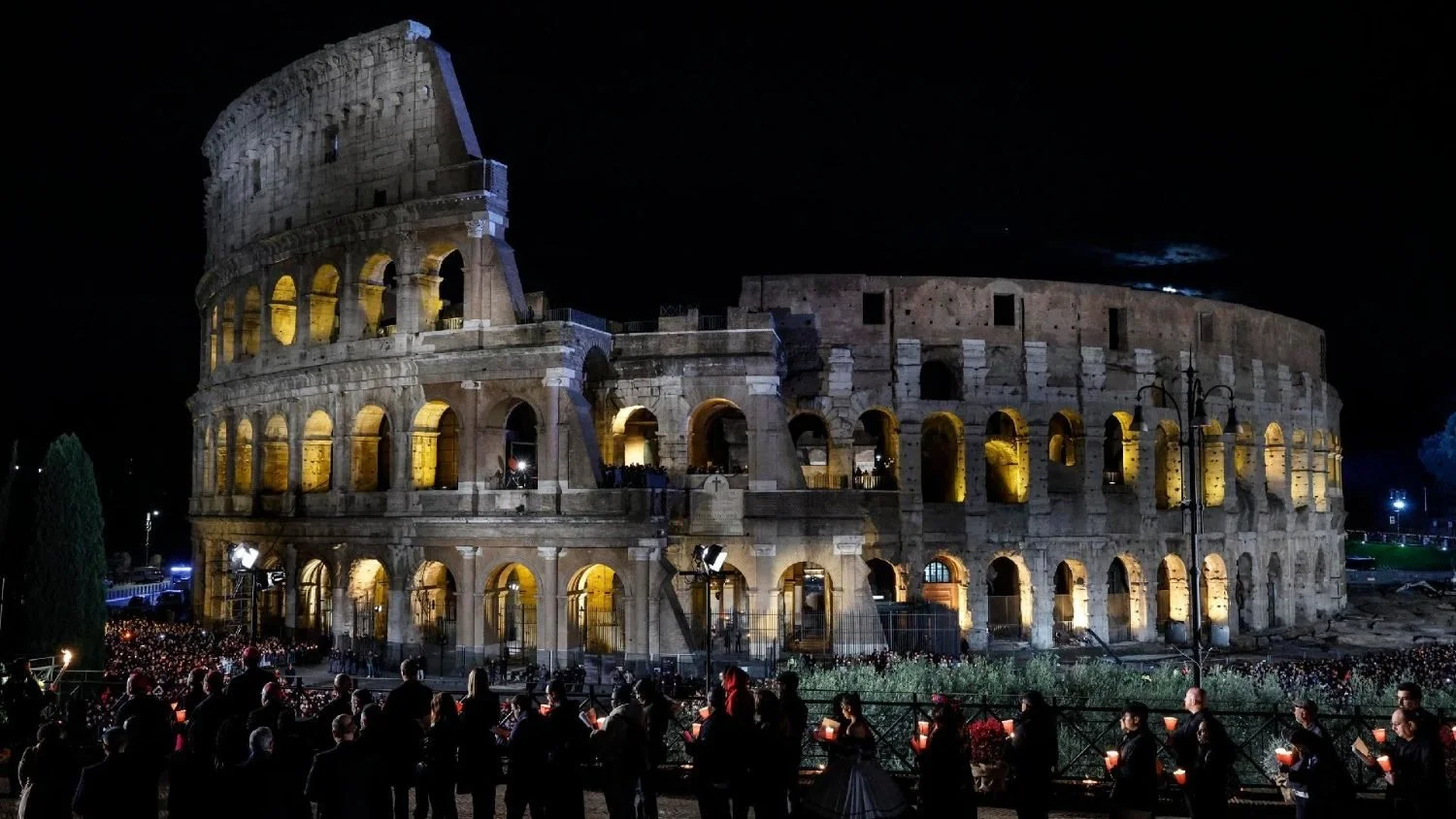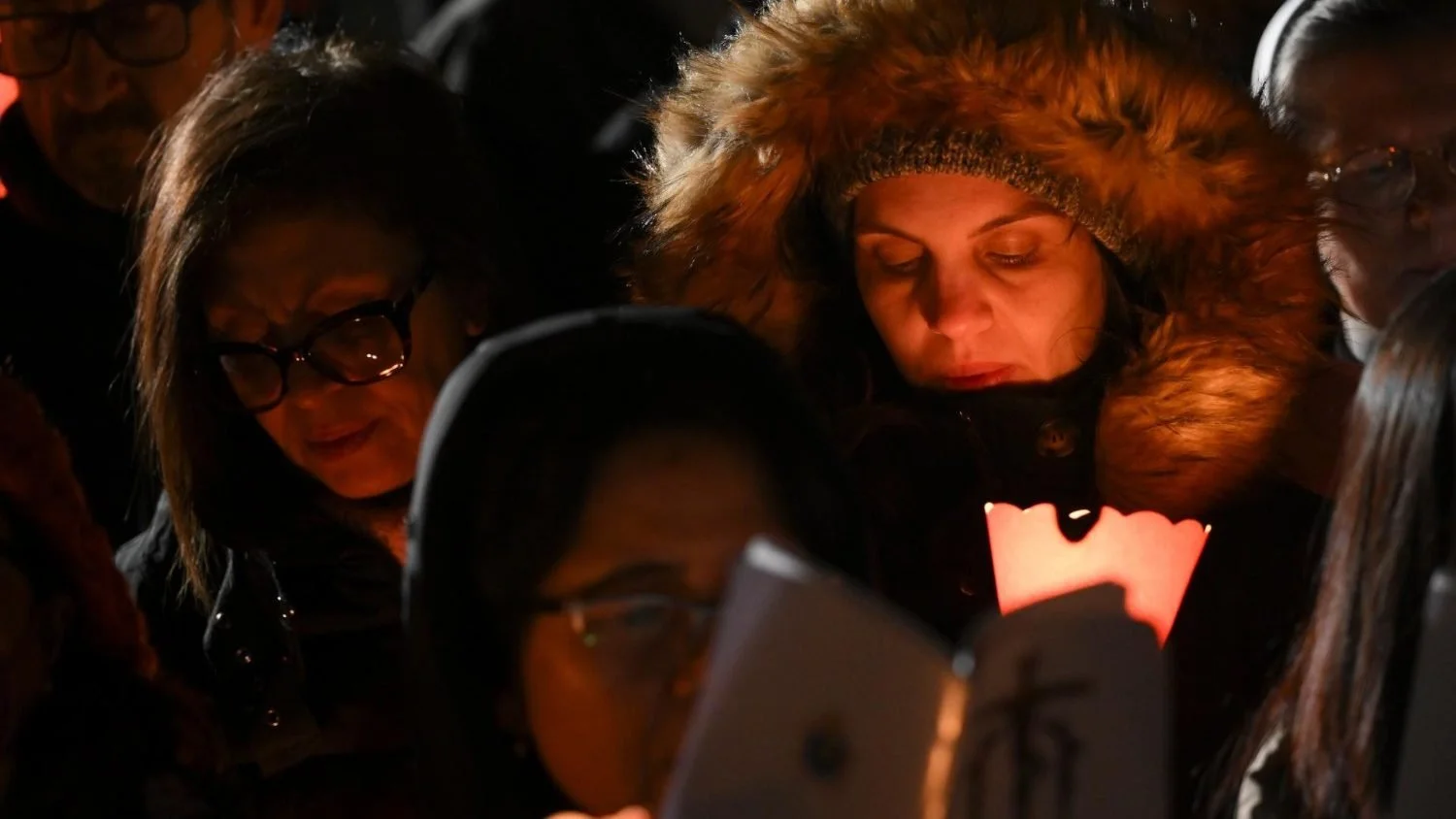Way of the Cross gives voice to a humanity wounded by war
The traditional Good Friday Way of the Cross procession unfolds at Rome’s Colosseum, with texts chosen by His Holiness Pope Francis to reflect the suffering of humanity as it lives the third world war fought piecemeal.
The Way of the Cross at the Colosseum
By Linda Bordoni
An unseasonal cold snap in Rome kept His Holiness Pope Francis from being physically present at the Colosseum on Holy Friday night for the Way of the Cross procession.
Considerations regarding his health after a three-day stay in hospital last week for a bronchitis, led to him having to follow events from his residence in the Vatican.
But his presence was tangible in the meditations he personally chose to remember the day of the crucifixion of Jesus Christ. In fact, each of the 14 stations of the cross featured the testimony and the prayers of men and women of our time, whom he has had occasion to meet and listen to during his many apostolic journeys, and who have experienced war, poverty, displacement and injustice in almost every corner of the globe.
The Colosseum
The tradition of the Way of the Cross in the Colosseum began in the 18th century. It was re-instated in the 1960s and has since been celebrated every Good Friday – with a brief interlude due to the Covid-19 Pandemic - in the magnificent Roman amphitheatre, and broadcast live to the world via radio and television.
In the presence of some 20,000 believers, the first station began with the prayer for enlightenment, a voice from the Holy Land that still suffers from the lack of peace in the world, and that echoes the cries of suffering people caught up in this “third world war being fought piecemeal.”
The solemn procession unwound in the night, giving voice to those who are forced to migrate, who endure the violence of traffickers and the indignity of detention centers; who risk their lives in dangerous sea crossings, who watch as their families, friends and countrymen and women are killed by firearms, missiles and mines. Who have the humility to pray the Lord to deliver them from hasty judgments and the easy condemnation of their neighbour.
The Americas, Africa, Asia, Middle East, Balkans
The Way of the Cross at the Colosseum
Young people from Central America asked Jesus for the strength to take charge of their lives and reject the compromises of a corrupt society while a South American mother recalled the violence of a guerrilla attack that injured her child and led her to reflect on what “it must have been like for Mary to see Jesus’s face bruised and bloodied”. “In the disfigured faces of those who suffer”, she prayed, “Grant that we may recognize you, Lord Jesus!”
Migrants from Africa, South Asia and the Middle East described themselves as “wounded by hatred” and asked for forgiveness; at the sixth station a priest from the Balkan Peninsula recalled the terror of being brutally held a prisoner of war, and where a Muslim woman, "was to him what Veronica was to Jesus": providence in the form of aid, food and hope. “Now until the end of my days,” he said, “I bear witness to the horrors of war and cry out: Never again war!”
Internally displaced teenagers asked for the strength to build bridges of fraternity and to bear witness to the Gospel, while the peace-loving people of South East Asia prayed for the conversion of those who traffic in weapons and spend money on armaments instead of food.
A missionary sister from Central Africa remembered the day terrorists attacked, killing family members, friends and colleagues. One of her Sisters disappeared and never came back, leaving "a valley of tears" and many questions. “My God, why have you abandoned me?” she asked, before understanding that Jesus’ love is the light amid the darkness. “Heal us, Lord Jesus”, she invoked, from the fear of being unloved, misunderstood, forgotten…
This report was originally published on the Vatican News website. Please click here to read the full text.


